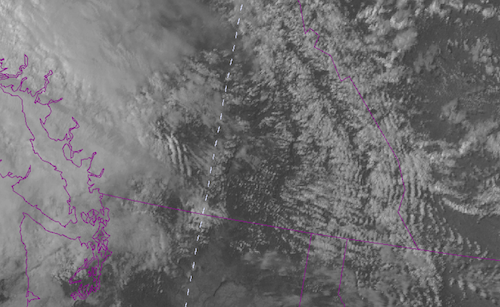ATSC 113 Weather for Sailing, Flying & Snow Sports
Special Clouds > Lenticular Clouds (aka Standing Lenticular, Lee-Wave Clouds, or Mountain-Wave Clouds)
Learning Goal 1b. Recognize special clouds (e.g. castellanus, billow, lenticular, rotor, banner, fractus, etc.)
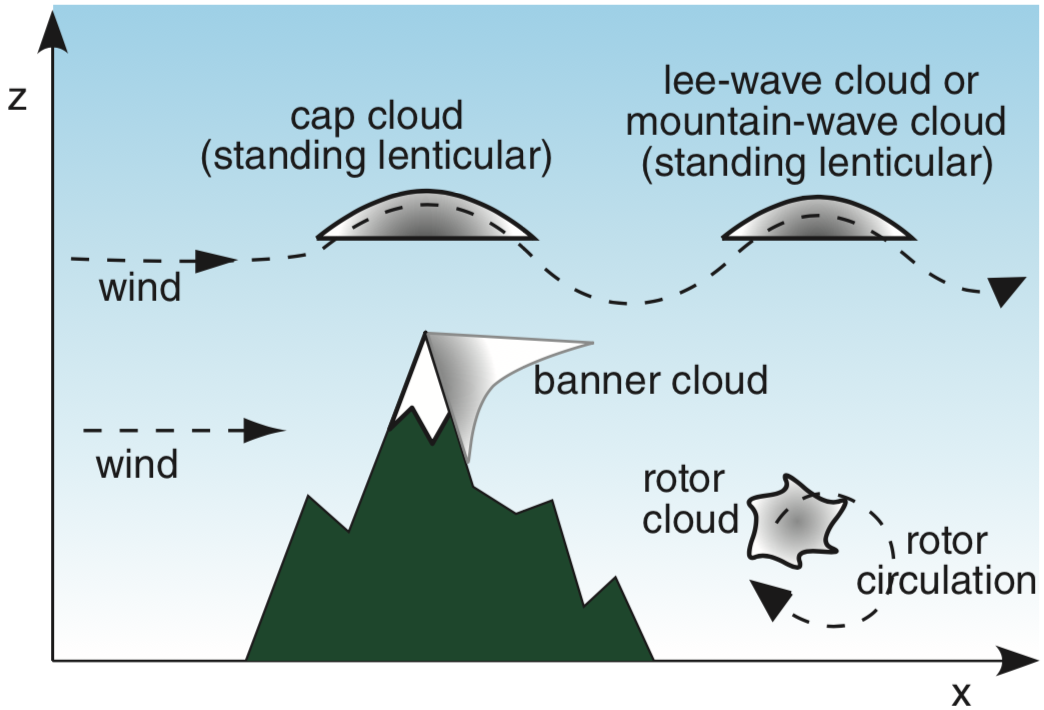
Lenticular clouds have a lens-shaped or almond-shaped cross section.
These clouds form in the crests of mountain waves (lee waves) if the air is relatively humid. If there are several humid layers of air at different altitudes, then you can see a stack of lenticular clouds that look like stacked dinner plates, or like UFOs (flying saucers).
Generation of these waves is discussed in Learning Goal 3c. But in a nutshell, if winds hit mountains, then the air is forced to rise over the mountain. On the downwind (lee) side, the air returns back down to its starting altitude. But due to inertia, it overshoots further down, and then overshoots up again, etc. The air is carried downwind while it is oscillating, so it traces the path of a wave.
In the upward-moving portion of the wave, the air cools to the point where clouds form. But when the air descends back down the lee side of the wave, the air warms and the clouds evaporate. Thus, these clouds are weird because they remain stationary relative to the mountain while the wind blows through the cloud. For this reason, the clouds are often known as standing lenticular clouds because they stand still over the mountain. This is one of the few types of cloud that you can fly through sideways in an airplane, as the wind blows the aircraft into and then out of the cloud.
For the first wave, which is over the mountain, the lenticular cloud is often called a cap cloud, because it is like a hat or cap on the mountain.
Pilots flying across these waves experience updrafts and then downdrafts — so it takes more effort to maintain a constant flight altitude. But if conditions are right, these waves can cause severe mountain wave turbulence, from the earth's surface all the way up into the stratosphere. For the gentler waves, sailplane pilots seek the upwind side of the lenticular clouds because they can have nearly continuous updrafts there.
View from the ground |
View from the air |
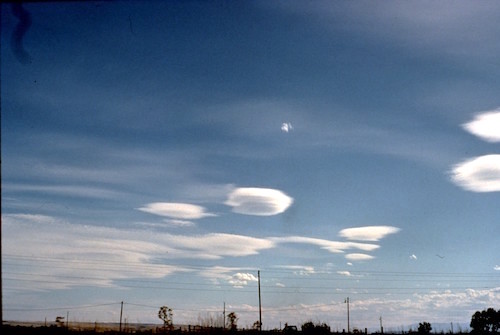 |

|
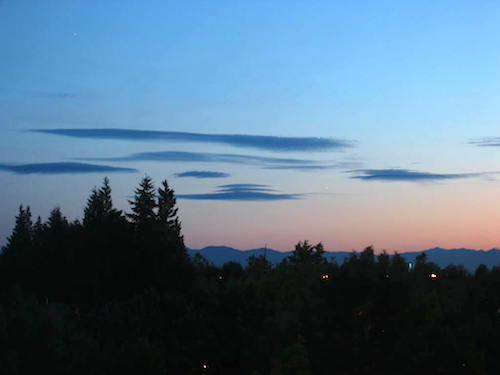
|
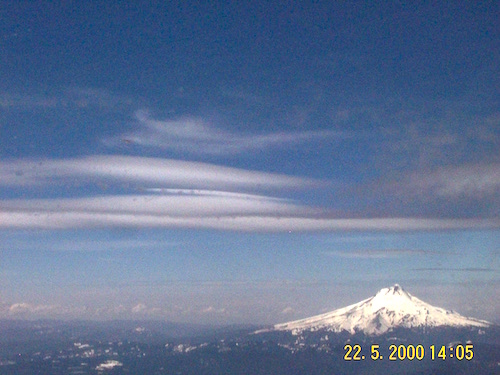
|
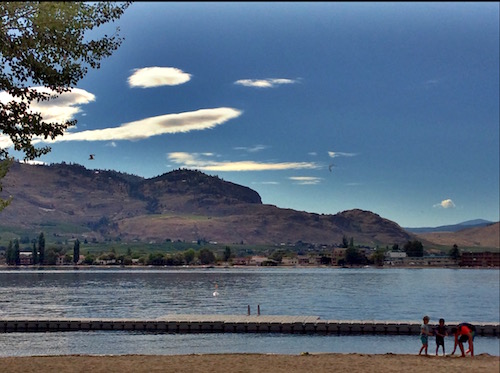
|
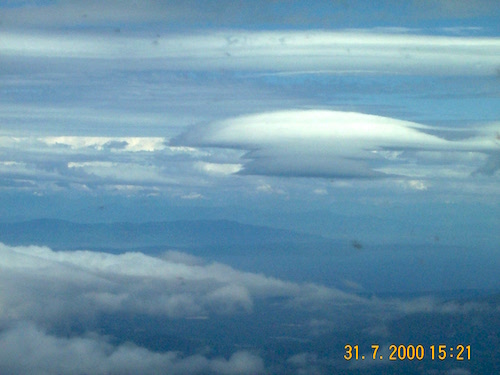
|
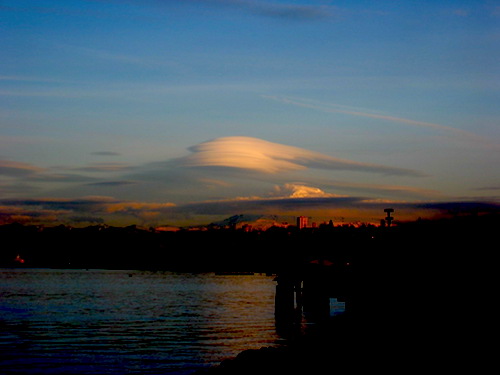
|
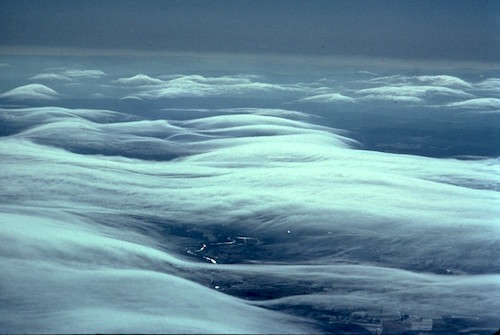 |
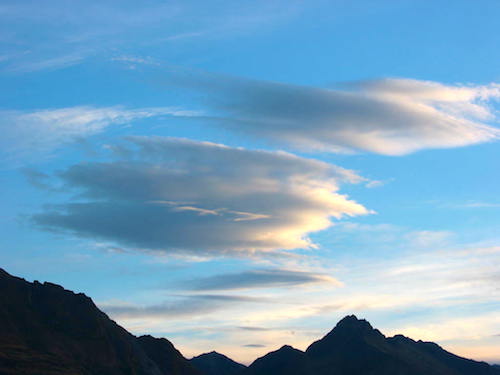 |

|
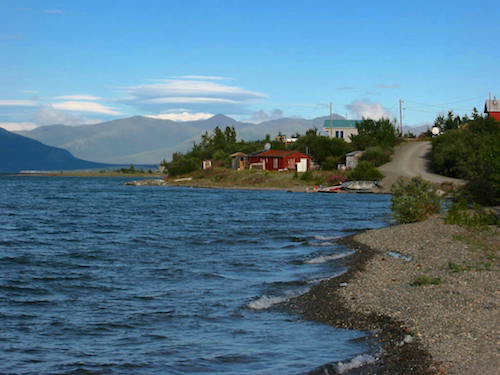 |
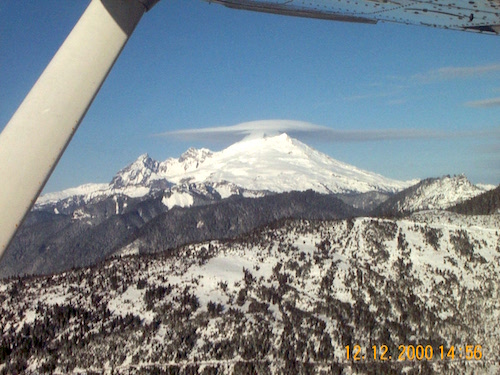 |
When viewed from directly below, they can have weird shapes, as if a drunken chef was pouring pancake batter onto a griddle.
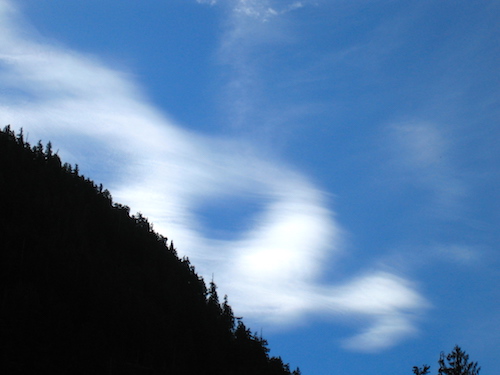 |
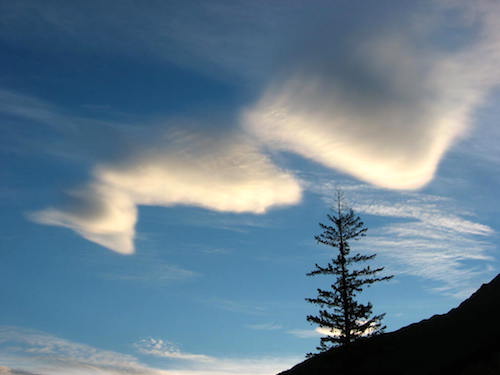 |
If the wind is blowing over a long ridge or mountain range instead of an isolated mountain, then the wave clouds appear elongated and are parallel to the ridgeline. A couple of my photos below show such ridges and valleys in the clouds, from a flight over the Appalachian mountains — relatively low mountains but with very long ridgelines. Air traffic control asked me why I had difficulty maintaining a constant altitude. I told them that I was near the service ceiling of the aircraft, which means that I couldn't climb fast enough to compensate for the downdrafts in the mountain waves.
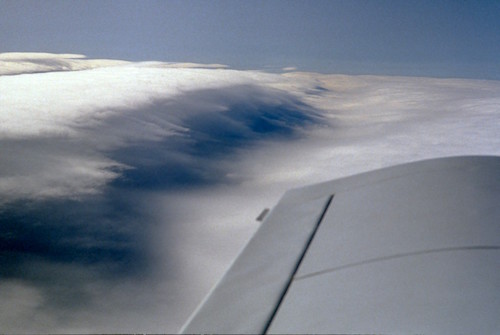 |
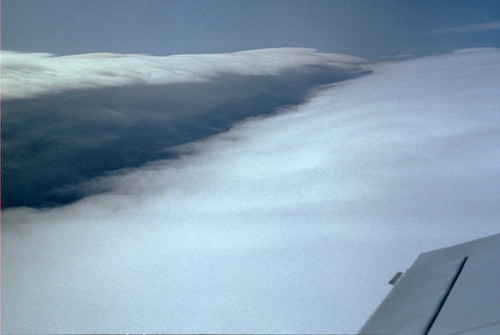 |
These long mountain-wave clouds are often visible from weather satellites, as in the photo below of southern British Columbia. The wind in the photo below is blowing from left to right (i.e. from the west). You can see waves parallel to (and east of) the Coast Mountains in south central BC. There are more waves along the BC / Alberta border, where the clouds are parallel to (and east of) the Rocky Mountains.
This next time-laps video shows stacked lenticular clouds downwind
of Mt. Etna, Sicily. The wind is blowing from over the left
shoulder of the photographer. As a result of the perspective of
this view, the clouds look like they are touching the mountain, but in
fact are farther in the background. The last half of the video
also shows a cap cloud over Mt. Etna. https://www.youtube.com/watch?v=8xWo1VWmobs
Here are more photos of lenticular clouds.
Keywords: cap clouds, lee waves, lee-wave clouds, lenticular clouds, mountain-wave clouds, mountain waves, standing lenticular
Extra info for experts; Not Needed for this Course.
Use this expert_resources link to find all the items listed below:
- Item - Topic
- World.A.1. - World Meteorological Organization (WMO) "International Cloud Atlas"
- USA.B.1. - Wikipedia list of cloud types, or search on Lenticular Cloud
- World.A.2. - WMO: Manual on Cloud Observations (an old, outdated document)
- USA.A.1. - American Meteorological Society (AMS): Glossary of Meteorology
- USA.C.1. - Practical Meteorology (PrMet): Chapter 17, Regional Winds (search on Mountain Waves)
Image credits. All figures by Roland Stull.
